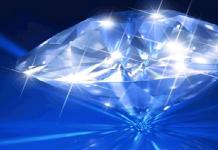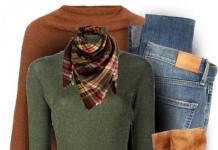Shrugs are small-amplitude movements that involve shrugging the shoulders.
Over time, shrugs must be included in the main training program for effective back development. This exercise is optional for beginners.
Recently, heavy weights are preferred in bodybuilding. However, you cannot make shrugs with a lot of weight. This can injure the spine.
In addition, when using a barbell or dumbbells of large weight, the load does not go to the trapezius muscles, but is evenly distributed between all the muscles of the shoulder girdle.
The use of shrugs in training allows you to pump the upper area of the "trapezium". Other muscles are loaded with different positions of the arms during exercises with dumbbells or a barbell. In addition to the trapezius muscles, the rhomboid muscles are included in the work.
Shrug standing
They are considered the most popular type of shrug. The execution technique is described below.
Pick up weights. Start raising your shoulders as high as possible without bending your arms. Then, also smoothly, lower your shoulders and return to the starting position. Do the exercise again. A barbell or dumbbells with a curved bar are ideal for doing this. They don't press on the groin or legs like a regular bar. If you are doing an exercise with a straight hypha, then change your hand grip as you do it.
Shrugs can also be performed on a vertical simulator, which is designed to train the calf muscles. You don't need dumbbells or a barbell for this. Approach the simulator, take a starting position, as when doing calf exercises. Concentrate on lifting your shoulders. Remember that there will be a lot of weight on your shoulders.
Tighten the muscles of the torso, bend your back slightly. Distribute the load evenly over the body, do not shift from foot to foot. When doing the exercise, applying strong pressure on the shoulders can cause discomfort. This will primarily affect those who have joint problems. To do this, place something soft between your shoulders and the machine.

Stand up straight with your feet close to each other. Take dumbbells and hold them on your lowered hands.
Unfold your shoulders, keep your back straight, and bend your knees slightly.
Start the exercise. Raise your shoulders as high as possible. When lifting, you can lower your chin. In this case, more load will go to the trapezius muscles.
When the shoulders are at the top, pause for three seconds and return to the starting position. You can do 12-15 reps or more.
Note: When doing the exercise, keep your torso straight without leaning forward, also do not use your biceps.
The main thing in this exercise is to choose the right weight for the dumbbells. Dumbbells that are very heavy will prevent you from contracting as much as possible. This means that muscle mass will not grow efficiently. If you feel that muscle contraction is not enough, use lighter weight equipment.
Do not roll your shoulders at the top. Many people think that this way you can build your shoulders faster. In fact, this is not true. Rotating the shoulders only increases the load on the trapezius muscles and prevents them from contracting completely.
Walk up to the barbell. Take a starting position: feet shoulder-width apart. Raise the bar to your knees as you would when doing deadlifts. You can hold the barbell with a direct or reverse grip, the distance between the arms is slightly wider than the shoulders. Spread your chest, bend in the lower back. The eyes should look straight ahead, do not lift the chin, keep it straight.

Start the exercise. To do this, take a breath, hold your breath for a couple of seconds and start lifting your shoulders up. At the top point, linger for two to three seconds, feel the trapezius muscles tense, then smoothly return to the starting position. Do 3-4 sets of 12-15 reps.
During this exercise, keep your torso still: fix your back straight, do not tilt your body forward, take your shoulders back. Do not make circular motions as this can damage your joints. And if you take into account the weight of the bar, then even more so. The main thing you should do is to raise your shoulders as straight as possible to the highest possible height.
Thus, you will force the trapezius muscles to contract as much as possible, and this provokes a rapid increase in muscle mass. Do not bend your arms, otherwise some of the load will go to them. Take your time to take on as much weight as possible.
A barbell that is too heavy will not allow you to lift your shoulders as high as possible. This reduces the effectiveness of the exercise.
In addition, the large weight, when lowering, will help round the back. So you can start slouching. In order not to do the exercise a hundred times, but to get the result very quickly, it is enough just to perform it correctly. Remember also about the chin: it cannot be lowered down.
Smith Machine Shrugs
You can swing the trapezius muscles in the Smith machine. Do it in two bar positions: front and back. The technique of performing the exercise is very similar to performing shrugs with a regular barbell. But there are some nuances:
1. The work will absolutely not use all the auxiliary muscles, which will allow you to better concentrate on your traps. This will allow you to perform movements more correctly, which leads to an increase in base weights.
Men strive to increase the volume of the upper body: to make the shoulders wide, the back, to develop the muscles of the arms, so their training plan includes many exercises on the upper body with a barbell, both basic and isolated. Today we will talk about one such isolated exercise called shrugi.
What muscles does the shrug exercise develop?
Shrugs are an isolated exercise, that is, it works on one specific muscle, practically excluding others. Shrugs engage the trapezius muscle, which is located in the upper back and resembles a trapezoid shape. If this muscle is well developed, then it becomes noticeable in the neck area, connecting it to the shoulder girdle.
The function of the trapezius muscles of the back is to maintain the position of the shoulder blades and shoulders, which allows us to keep our back straight and lift weights.
The rhomboid muscles and muscles that lift the shoulder blades work minimally in movement. In some cases, it is possible to activate the muscles of the chest and shoulders.
Technique for performing shrugs with a barbell
Exercise "shrug" is performed with dumbbells standing or sitting. In the first option, it is also allowed to use a barbell. The Smith machine allows you to perform this exercise, holding the barbell behind the body. In addition, shrugs can be performed in an incline or on an incline bench, but then this exercise can no longer be called isolated, since it allows you to feel the deltoids and chest muscles well.
Consider the correct classic standing barbell shrug technique.

Execution technique:
- We take the barbell with a straight grip, placing our palms approximately shoulder-width apart.
- We straighten, keep our back straight, and bring the shoulder blades together.
- As you exhale, raise your shoulders up. It is like a daily movement, like you are just shrugging your shoulders. Lock in the top position for 1-2 seconds.
- As you inhale, lower your shoulders down.
We repeat 10-12 times, 4 working approaches.
Video: Shrugs with a barbell (how to do the exercise while standing)
If you want to do the exercise with a barbell located behind the body, the principle remains the same. We hold the bar with a straight grip and perform shrugs. But this exercise option is not the most convenient.

For beginners, you can try to do the exercise with a low weight; dumbbells up to 5 kg are well suited for this.

Execution technique:
- We take the dumbbells in our hands with a neutral grip.
- We stand up straight. The back is straight, the gaze is directed forward.
- Hands with dumbbells are lowered along the hips.
- Raise your shoulders up, fix the position and lower it.
You can try this exercise while sitting. The technique is the same, it is important to steadily place the feet on the floor at the width of the pelvis and make sure that the back is straight.
Video: Shrugs with dumbbells
Shrugs on an incline bench
If the goal of the exercise for you is not only the isolated study of the trapezius muscles of the back, but also the improvement of posture, you can try the option of shrugs on an incline bench.
You will need a bench with an adjustable backrest.
- Set the tilt angle to 45 degrees.
- Take the weights in your hands.
- Lie on your stomach on the back of the bench so that your chin and neck remain in weight.
- You can sit on a bench seat or kneel on it.
- If you are doing the exercise while standing, then you should place your feet on the width of the shoulders or wider for stability.
- In this exercise format, you not only raise your shoulders, but also bring your shoulder blades together.

You can take a barbell for this variant of shrugs, but it will be more convenient to perform the exercise with dumbbells.
Video: Shrugs on an incline bench with dumbbells
Despite the relative simplicity of the technique, there are a number of nuances that will help to perform shrugs as safely and efficiently as possible:
- Don't let your shoulders sag under the weight of the barbell. If this happens, it is better to take less weight.
- Do not drop your shoulders down, this can damage your shoulder joints. All movement must be controlled.
- Do not lift your chin, otherwise you can pull the neck muscles.
- Do not make circular or other movements other than vertical. This can lead to injury to the shoulder joint.
Shrugs help to form a beautiful, straight silhouette with a well-developed upper back and neck, so you should not neglect them in your workouts. Isolated exercises are generally not suitable for increasing the volume of muscle mass, they are needed to "finish off" the muscles after basic exercises, in some cases - to impart symmetry to the muscles and relief. But the emphasis should always be on the “base”.
Exercise shrugs with a barbell behind the back, pump the top of the traps, thickening the neck. Refers to formative exercises.
Raising the shoulder blades (or shrugs) develops the muscles used in the swing (raising the arm over the head) for throwing or striking in sports such as baseball, football, basketball and javelin throwing, as well as serving the ball (and cutting shot) in tennis and volleyball.
Powerful trapeze and the neck is a great insurance when doing heavy squats and overhead presses. Shrugs behind the back, like no other exercise, develop the correct posture, which is necessary not only in any sport, but also in everyday life as the main factor in the prevention of spinal injuries.

 Shrugs with a barbell behind the back - trapeze exercise
Shrugs with a barbell behind the back - trapeze exercise 1. Stand up straight. Place your feet shoulder-width apart and bend your knees slightly. Ask your partner to pass the barbell to you from behind. Take it with a grip from above (palms facing back). The distance between the palms is slightly wider than the shoulders.
2. Straighten, put your shoulders back and slightly lift your chest. Pull in your stomach, but do not bend your back, maintain the natural curve of the spine.
3. The arms are fully extended behind the back. The bar is at the bottom of your buttocks.
4. Look - straight ahead. Inhale and, holding your breath, lift your shoulders as high as possible. Do not help yourself by bending your arms - they should remain straight throughout the set. Only the shoulders move! The back, chest and legs are motionless.
5. Having reached the top point, tense the trapezoid with all your might and try to hold the bar in this position for 1-2 seconds (to achieve maximum muscle contraction).
6. Exhale and gently lower your shoulders.

 Shrugs with a barbell behind the back - muscles
Shrugs with a barbell behind the back - muscles 1. Do not bend over! Maintain correct posture throughout the entire set. To load the traps to the maximum, take your shoulders back as far as possible and raise your chest higher. Keep your torso in this position throughout the set.
2. The range of motion in this exercise is less than in traditional shrugs when you hold the bar in front of the hips. However, shrugs with a barbell behind the back are much more effective for improving posture. In addition, back shrugs help prevent the development of "round" shoulders (when the shoulders appear round against the back), which often occurs with over-performing classic shrugs and bench presses.
3. Do not use too heavy a barbell - it will further reduce the already short range of the exercise.
4. Hold your breath while lifting the barbell. This breathing technique will allow the muscles that are doing the work of keeping the back in the correct position to develop much more effort than during normal breathing (on average by 20%). This will certainly give you the ability to add weight to the bar without compromising range of motion.
5. The chin should always be slightly raised, the head should be straight, the gaze is directed straight ahead, the shoulders are laid back, and the chest is arched forward. If you tilt your head down toward the floor or to the side toward one of your shoulders, you risk injuring your neck or back.
6. Do not bend your elbows while lifting and lowering the bar. Otherwise, you will reduce the range of motion and reduce the load on the trapezoid.
- with impaired venous outflow from the cranial cavity;
- with severe scoliotic deformity of the thoracic spine.
- directly the trapezius muscle;
- muscle lifting the scapula;
- rhomboid (large and small) muscles;
- intercostal muscles;
- small pectoral muscles.
A developed trapezius muscle is not only evidence of outstanding athletic body condition, but also an essential component of correct posture and, accordingly, a healthy back. At the very least, the cervical and thoracic spine will definitely thank you for the regular training of the trapezius muscles. Barbell shrugs are an exercise that will provide you with invaluable help in this. There are several types of shrugs, performed with different sports equipment. But in this article we will talk in more detail about exactly how to make shrugs with a barbell.
Benefits of Exercise
Barbell shrugs help to activate blood circulation in the cervico-occipital region, improving the delivery of oxygen to the soft tissues. This can help those who regularly suffer from headaches that do not have an obvious cause.
Albeit indirectly, this exercise also helps to improve cerebral circulation, in particular - the occipital lobe of the brain. People who notice a decrease in visual acuity due to frequent sitting at a computer, performing shrugs with a barbell or dumbbells, may after a while notice some improvement in their condition, because it is in the occipital lobe of the brain that the visual center is located. Its insufficient blood supply due to improper position of the body when sitting and leads to a decrease in visual acuity.
In terms of sports-related aspects, the regular use of shrugs makes the neck shorter and thicker. This circumstance "plays into the hands" of the wrestlers, because it will be much more difficult for the opponent to perform the strangulation, not being able to properly grasp the neck.
Barbell shrugs will also be useful for extreme athletes (roller skaters, free riders) who risk getting a head injury as a result of falling from a height. The fact is that the muscular skeleton of the neck developed when performing shrugs is able, literally, to save these people's lives.
There are no absolute contraindications for performing shrugs. It is undesirable to resort to this exercise for such athletes:
Women need to be careful with the weight of the barbell used in the shrugs - it should be selected to be able to perform 15-20 reps (no more!). Then, on the one hand, barbell shrugs will contribute to correct posture, on the other hand, they will not lead to pronounced hypertrophy of the trapezius muscles.
What muscles are involved in shrugs?
Now let's take a closer look at which muscles work when performing shrugs:
Speaking of the trapezius muscle, it is important to clarify here - it functionally consists of three parts:
- upper, lifting the upper shoulder girdle up;
- the middle, which is responsible for bringing the shoulder blades to the spine;
- lower, responsible for bringing the lower poles of the shoulder blades to the spine.
We need to remember this when we begin to consider the types of shrugs - it will be easier to understand how they differ from each other.

Types of barbell shrugs
Speaking about which muscles work in the barbell shrugs, we mentioned the division of the trapezius muscle into functional zones. To use each of them, there is a variety of barbell shrugs.
Shrugs with a barbell standing
Shrugs with a barbell while standing provide for the position of the bar in front of you at hip level in lowered hands. In this version of the exercise, the upper portion of the trapezoid is involved, since the execution technique involves moving the bar up and down within the vertical of the body. Shrugs with a bar in front of you (the so-called version of the exercise while standing) is the most frequently performed type of this exercise.

Shrugs with a barbell behind the back are a variant of performing shrugs that transfers the load to the middle and lower parts of the trapezium, due to the fact that it is not possible to raise the shoulder girdle without powerful reduction of the shoulder blades. In principle, the movement algorithm is the same as when performing shrugs with a barbell in front of you.

Shrugs lying on the bench
Shrugs while lying on a bench allow you to work out the middle of the trapezius muscle. This is most important for a beautiful, correct posture. There are no special requirements for the location of the bench - it can be set at different angles, depending on the feelings of the practitioner (“individual adjustment” is required). The only thing is, if the bench is raised too high and the athlete does not reach the floor himself, then he will need assistants to feed the barbell for the exercise.

Let's make a reservation right away - the barbell is far from the best sports equipment for performing shrugs. Dumbbells or D-handles attached to crossover block devices are much better. In this case, your hands will be in a neutral position and your arms will be along your body. Nevertheless, below we tried to describe as clearly as possible how to perform shrugs with a barbell, because there are many athletes who prefer exercising with this particular sports equipment.
Exercise technique
We will tell you about two techniques for performing shrugs - classical and therapeutic. The first is aimed at the development of the trapezium, and the second, in addition, is a therapeutic and prophylactic measure for certain diseases.
Classical technique
The exercise should be performed while standing firmly on the floor. The bar of the bar should be at the level of the hips, the grip is one-sided, the grip is closed.
Hands are straightened at the elbow joints, grip is shoulder-width apart. As you exhale, we powerfully move the shoulder joints to the shoulders, performing a kind of shrug. Without pause, we begin to inhale, while lowering our shoulders to the starting position. We repeat the movement several times in a row without long pauses.
Therapeutic technique
Now let's take a step-by-step look at how to perform barbell shrugs with a therapeutic effect. This exercise technique is as follows.



































